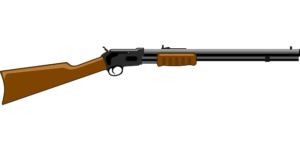How do I know which grain to select for ammo? – Understanding Bullet Grains
Selecting the right grain for your ammo can seem like a daunting task, with a myriad of options available. It’s crucial to understand that the choice of grain, which refers to the weight of the bullet, can significantly impact your shooting experience.
The selection process is influenced by several factors, including the type of firearm, the intended use, and personal preference. Whether you’re a seasoned shooter or a beginner, making an informed decision can greatly enhance your precision and overall performance.
This comprehensive guide will delve into the intricacies of bullet grains, equipping you with the knowledge to choose the best fit for your specific needs. So, buckle up and prepare for an enlightening journey into the world of ammo grains.

“What is grain in ammo?”
Grain in ammunition refers to the weight of the bullet or projectile that gets fired from the weapon. It’s a unit of measurement where 1 grain equals 0.0648 grams. The grain weight of a bullet is crucial as it impacts the bullet’s speed, trajectory, and energy.
When selecting ammo, it’s important to consider the grain weight. Lighter grain bullets typically travel faster, while heavier grain bullets may offer better penetration. The choice of grain weight often depends on the intended use of the ammo. For instance, if you’re target shooting, a lighter grain bullet might be preferable for its speed and flat trajectory. On the other hand, for hunting or self-defense, a heavier grain bullet might be more suitable due to its greater stopping power.
It’s also worth noting that the grain weight can affect the recoil of the weapon. A lighter bullet will typically produce less recoil, making it easier to handle. However, heavier bullets can provide better stability, especially in windy conditions.
To summarize, the grain in ammo is a crucial factor in determining the performance of the bullet. By understanding the impact of grain weight on bullet performance, you can make a more informed choice when selecting ammo.
“How does grain affect bullet speed?”
The grain of a bullet, referring to its weight, plays a significant role in determining its speed. Typically, a lighter bullet, or one with fewer grains, will travel at a faster speed compared to a heavier one. This is because lighter bullets require less energy to propel them, allowing them to reach higher velocities.
However, the selection of grain is also influenced by other factors such as the firearm type, barrel length, and intended use of the ammunition. For instance, in long-range shooting, shooters might prefer heavier bullets due to their better wind-bucking abilities.
It’s also important to note the relationship between bullet speed and accuracy. While lighter bullets travel faster, they may not necessarily provide better accuracy. The optimal grain for accuracy varies depending on the firearm and the shooting conditions.
• Testing different grains can be a practical approach to find the best grain for your specific needs. By experimenting with different grain weights, you can determine which provides the best balance of speed, accuracy, and recoil for your particular firearm and shooting style.
Remember, the grain is just one of the many factors that can influence bullet speed and performance. Other elements like bullet design, propellant type, and even atmospheric conditions can also play a part. Understanding how these factors interact can help you make an informed decision when selecting ammunition.
“Does grain size impact accuracy?”
Certainly, the grain size of your ammunition can significantly impact its accuracy. The term ‘grain’ in ammunition refers to the weight of the bullet or projectile that exits the barrel. It’s crucial to understand that different firearms perform best with different grain sizes, and this can affect the bullet’s velocity and trajectory.
For instance, a higher grain weight typically results in a slower muzzle velocity, but it might offer better wind resistance, potentially improving accuracy in long-range shooting. Conversely, a lighter grain bullet might exit the barrel faster, but it can be more affected by wind drift, which could decrease accuracy over long distances.
Here are some factors to consider when selecting grain size for ammo:
1. Firearm compatibility: Check the manufacturer’s recommendations for your specific firearm. Some firearms are designed to work best with certain grain sizes.
2. Shooting distance: For long-range shooting, a heavier grain might be more effective. For short-range, a lighter grain could suffice.
3. Wind conditions: Heavier grains are generally less affected by wind drift, which can improve accuracy in windy conditions.
Remember, the key to accuracy is consistency. Once you find a grain size that works well with your firearm and shooting conditions, stick with it to maintain consistent shooting performance. This approach will allow you to better understand how your ammo behaves, thereby enhancing your overall shooting accuracy.
“What grain is best for hunting?”
The type of grain you choose for your ammunition can significantly impact your hunting experience. A crucial factor to consider is the weight of the grain, which directly affects the bullet’s speed and trajectory. Lighter grains typically travel faster and are more suited for varmint hunting, while heavier grains, delivering more energy upon impact, are ideal for larger game.
Another aspect to consider is the type of game you are hunting. For instance, a .243 Winchester with a 55-grain bullet is perfect for small game, but for larger animals like deer, a .30-06 Springfield with a 180-grain bullet is more appropriate.
In addition, the shooting distance also plays a role in grain selection. Longer shooting distances usually require heavier grains for better stability and accuracy. However, it’s important to note that heavier bullets may have more recoil, which could affect your shooting comfort.
Furthermore, the barrel twist rate of your firearm can influence the performance of different grain weights. A faster twist rate is better suited for heavier bullets, while a slower twist rate pairs well with lighter bullets.
Remember, the best grain for hunting depends on your specific needs and preferences. Testing different grain weights can help you find the perfect balance between speed, accuracy, and impact power.
“Does grain matter for self-defense ammo?”
When it comes to selecting ammunition, the grain or weight of the bullet plays a significant role. Grain directly influences the bullet’s speed, trajectory, and impact force. For self-defense ammo, it’s crucial to understand how these aspects can affect your shooting accuracy and stopping power.
Higher grain bullets tend to be slower but deliver more energy upon impact, making them potentially more effective for self-defense. However, they may also have more recoil, which can affect your ability to quickly fire successive shots.
On the other hand, lower grain bullets are typically faster and can offer a flatter trajectory, making them easier to aim. They also usually have less recoil, allowing for quicker follow-up shots. But, they may not deliver as much energy upon impact, potentially reducing their stopping power.
- Understanding your firearm, shooting skills, and specific needs can guide you in selecting the right grain for your self-defense ammo.
Remember, the right grain for your self-defense ammo is subjective and largely depends on personal preference. It’s always a good idea to try out different grains to see which one suits your needs the best.
Whether you choose a heavier or lighter grain, the most important thing is that you’re comfortable with your ammo and confident in its performance. After all, in a self-defense situation, your comfort and confidence with your firearm and ammo can make all the difference.
“How does grain affect recoil?”
The weight of the bullet, measured in grains, significantly impacts the recoil of a firearm. Typically, a heavier grain bullet will produce a stronger recoil. This is because the energy required to propel a heavier bullet is greater, resulting in a more powerful kickback.
In the context of selecting grain for ammo, it’s essential to understand that the grain weight doesn’t only affect recoil but also the bullet’s velocity and accuracy. For instance, lighter grain bullets tend to travel faster and can be more accurate at shorter ranges. However, they may be more affected by wind and other environmental factors at longer ranges.
On the other hand, heavier grain bullets generally travel slower but maintain their trajectory better over long distances. They are less affected by wind and can deliver more energy on impact.
When selecting grain for ammo, it’s crucial to consider the purpose of your shooting. If you’re target shooting at close range, a lighter grain bullet might be suitable. If you’re hunting or shooting at long distances, a heavier grain bullet might be more appropriate.
Remember, the choice of grain weight can significantly affect the recoil and overall shooting experience. Experimenting with different grain weights can help you find the perfect balance for your specific needs.
When it comes to the relationship between grain and recoil, there’s no one-size-fits-all answer. It’s about understanding the trade-offs and making an informed decision based on your individual requirements and shooting conditions.
Remember, safety should always be your top priority when handling firearms. Always follow the manufacturer’s recommendations and consult with a professional if you’re unsure about any aspect of ammo selection.
“What grain is best for target shooting?”
Selecting the right grain for target shooting is a crucial aspect of ammunition selection. The grain, referring to the weight of the bullet, can significantly influence the trajectory and performance of your ammunition. For target shooting, a common choice is 55-grain bullets, which are known for their stability and accuracy over short to medium distances.
However, the ideal grain can vary depending on factors like the type of firearm, the distance to the target, and personal shooting style. For instance, heavier grains such as 77 or 80 might be preferred for long-range shooting due to their better wind resistance and energy retention.
• Lighter grains (under 55): Ideal for short-range shooting and high-velocity firearms.
• Medium grains (55 to 70): Suitable for most general-purpose rifles and versatile across various shooting scenarios.
• Heavier grains (70 and above): Preferred for long-range shooting and high-precision rifles.
Remember, the best grain for target shooting is often a matter of personal preference and specific shooting conditions. It is recommended to experiment with different grains to find the one that provides the best performance for your specific needs.
In addition, the quality of the ammunition and the maintenance of your firearm can also play a significant role in your shooting accuracy. Therefore, it is essential to consider these factors when selecting your ammunition grain.
“Is higher grain ammo more powerful?”
The grain of ammo is a measure of its weight, not its power. Higher grain ammo is heavier and thus can have a different impact than lower grain ammo. The choice of grain largely depends on the intended use of the ammo.
For instance, long-distance shooting often requires higher grain ammo. The increased weight provides stability during flight, improving accuracy. However, it’s essential to note that a high grain doesn’t necessarily equate to high power. The power of ammo is determined by the speed and energy it carries, often referred to as muzzle velocity and muzzle energy.
- Muzzle Velocity: This refers to the speed at which a bullet leaves the barrel. A lighter bullet often has a higher muzzle velocity due to less resistance.
- Muzzle Energy: This is the kinetic energy of the bullet as it’s expelled from the firearm. A heavier bullet can have more muzzle energy, making it potentially more lethal.
When selecting the right grain for your ammo, consider the purpose of your shooting. For example, hunting often requires higher grain ammo for its potential lethality, while target shooting could benefit from lighter, faster bullets. Always remember that the firearm’s compatibility with the ammo grain is crucial, as using inappropriate ammo can damage the firearm and pose a safety risk.
In essence, higher grain ammo is not necessarily more powerful, but it can offer different benefits depending on the shooting context. It’s essential to understand the nuances of grain selection and align it with your shooting objectives and firearm specifications.
Conclusion: Selecting the Right Grain for Your Ammo
In conclusion, understanding the concept of grain in ammo is crucial for any firearm enthusiast. The grain of your ammo impacts not only bullet speed but also accuracy. This is particularly important when considering the purpose of your ammunition, be it hunting, self-defense, or target shooting.
The grain size can significantly affect your hunting experience, with different grain sizes being optimal for different game. Similarly, grain size can also impact the effectiveness of self-defense ammo, and the recoil experienced when shooting. In target shooting, the right grain can make the difference between hitting or missing your mark.
Moreover, the power of your ammo is also influenced by the grain, with higher grain often being more powerful. However, it’s essential to remember that the ‘best’ grain will vary depending on individual needs, gun type, and shooting conditions.
As trends and developments continue to emerge in the firearms industry, understanding the role of grain in ammo will only become more important. Therefore, always stay informed and consider the grain when selecting your ammo. This knowledge will help you make the right choice for your specific needs, enhancing your shooting experience and effectiveness.




